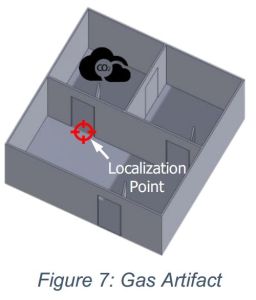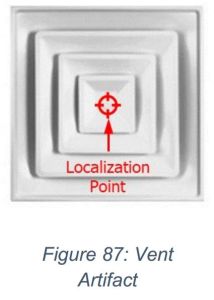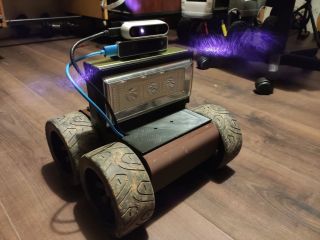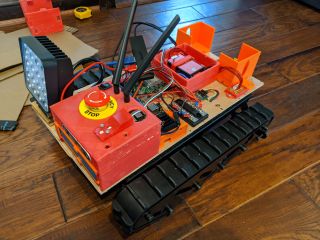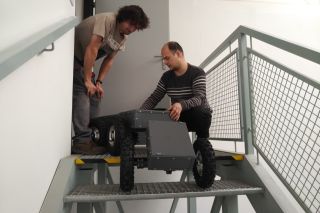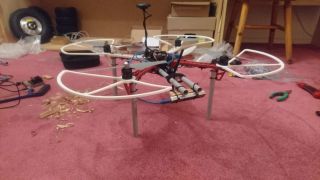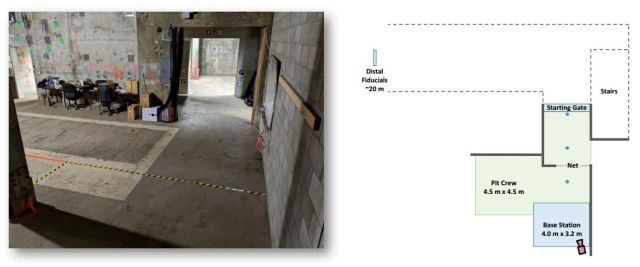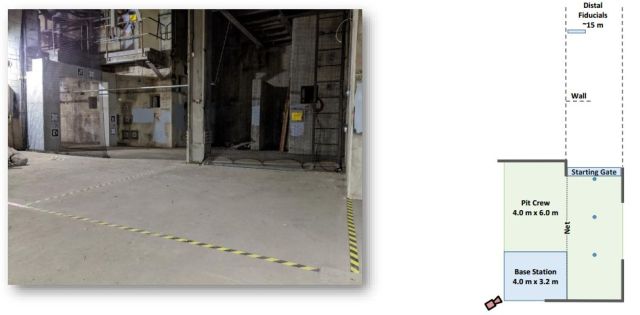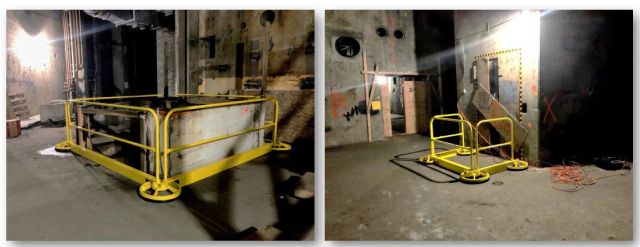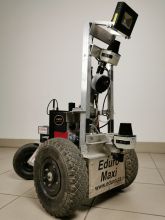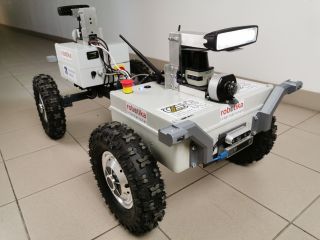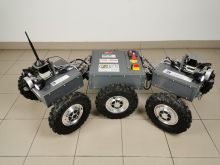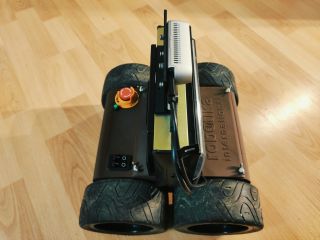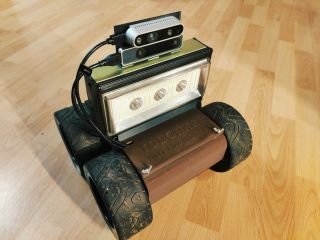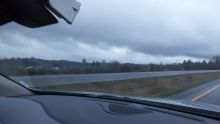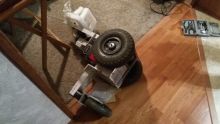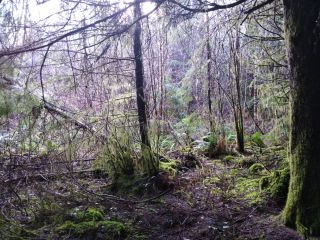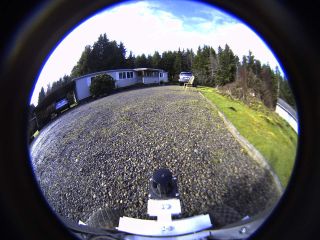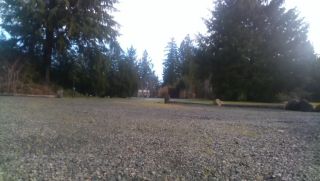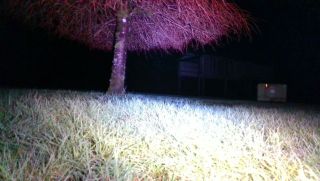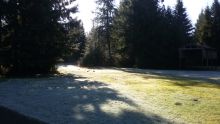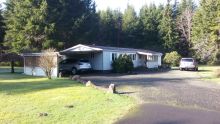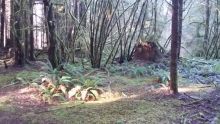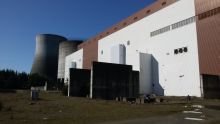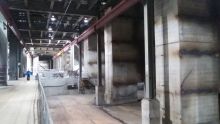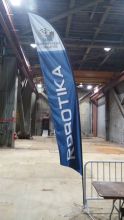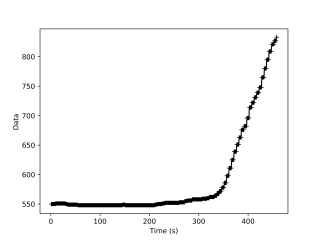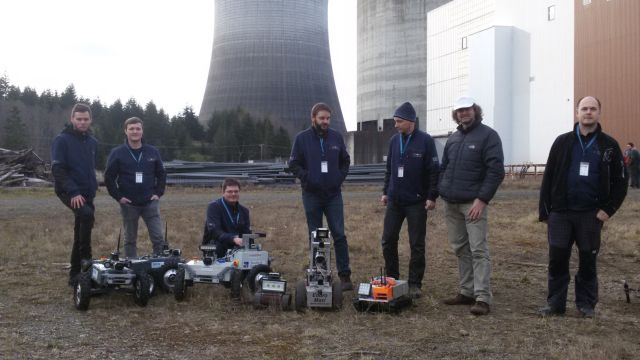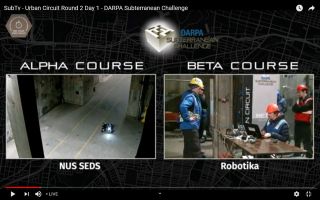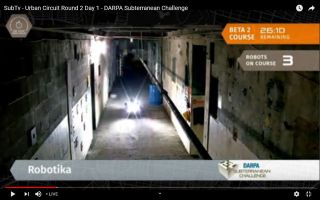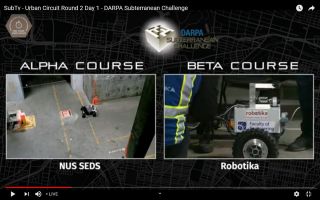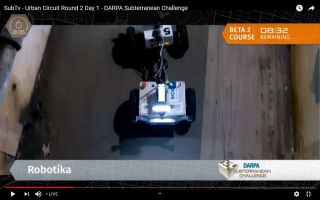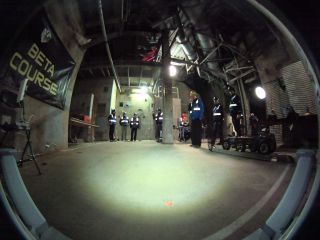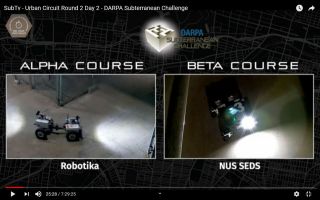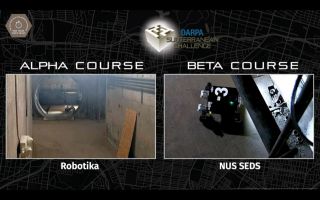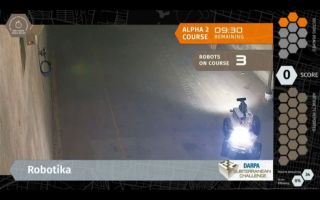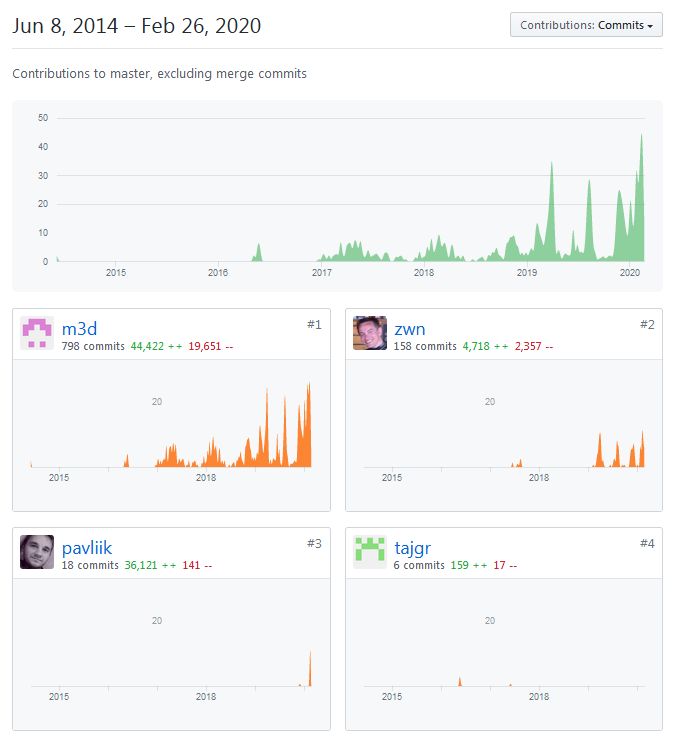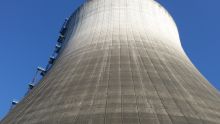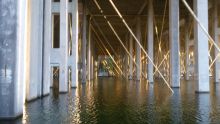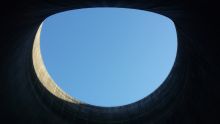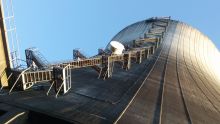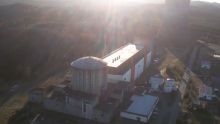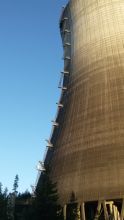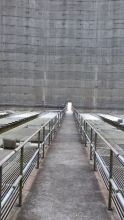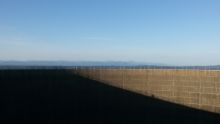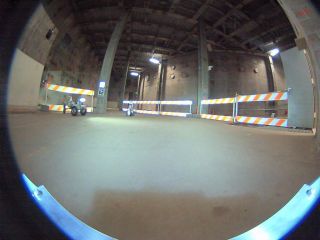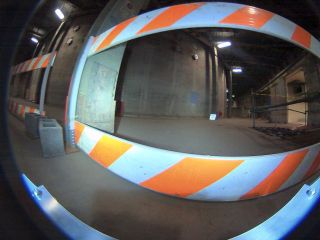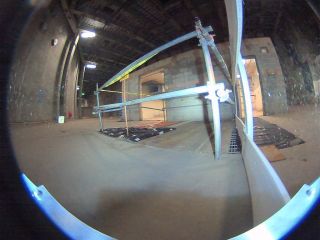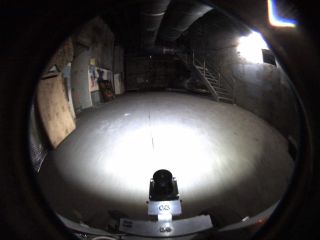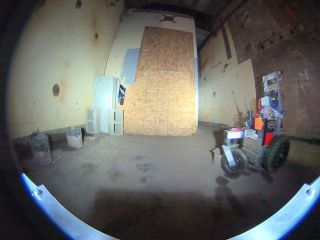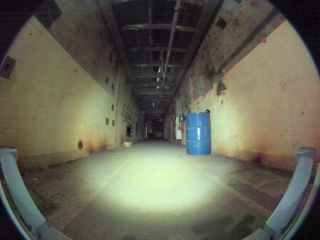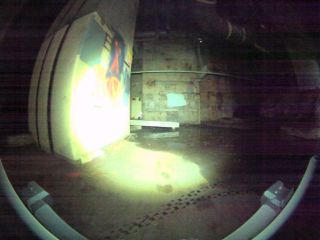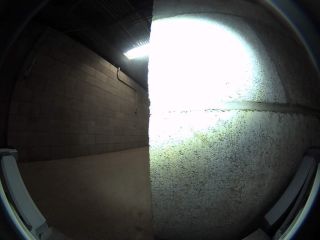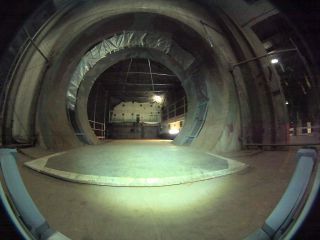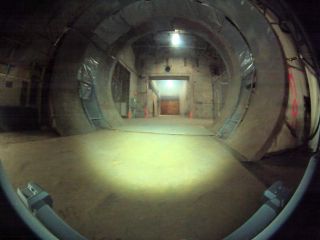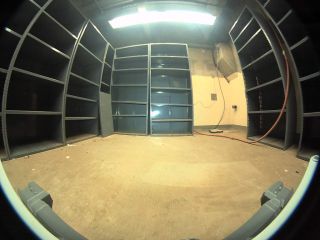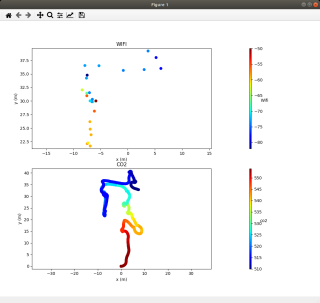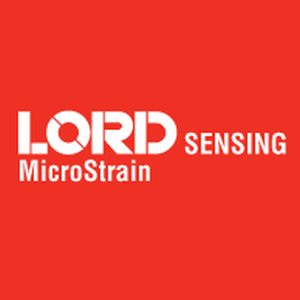SubT Urban Circuit
Robotika Team
The DARPA Subterranean Challenge Urban Circuit is the 2nd stage of two years project. The expected event date is February 2020. Update: 3/3/2020 — The Artifacts
Content
- 191011: Urban Circuit Team Qualification Waiver
- 191109: Urban Circuit Environment Preview
- 191011: Urban Circuit Site Announced
- 191206: New Robotika Platforms
- 200107: Status 39 days to takeoff
- 200121: Urban Circuit Systems Team Call (25 days remaining)
- 200203: Robot Qualification (12 days remaining)
- 200214: Leaving tomorrow ...
- 200215: Montesano and missing bags
- 200216: Eduro and K2 back in the game
- 200217: Presidents' Day
- 200218: Team Orientation, Move-in and Systems Checkout
- 200219: Alpha Strategy
- 200220: Robotika scores the first point!
- 200221: Beta Course - 1 point
- 200222: Run 1 completed
- 200223: Beta Strategy and Reset Day
- 200224: Run 3 - A Nightmare on Elma Street
- 200225: Run 4 - The Last Strike
- 200226: Lessons Learned
- 200227: Awards Ceremony
- 200228: The Cherry On The Top
- 200030: The Artifacts
11th October 2019 — Urban Circuit Team Qualification Waiver
Official announcement on community website
An updated Qualification Guide is coming soon, but we wanted to provide an
update on the expected qualification deadlines for the upcoming Urban
Circuit:
- Systems Team Qualification: December 3, 2019
- Virtual Team Qualification: January 3, 2020
New teams that are interested in participating in the SubT Challenge must
first complete their Team Registration before submitting qualification
materials: https://www.subtchallenge.com/register.aspx
Urban Circuit Team Qualification Waiver
(received by e-mail, On 10/10/2019 5:11 PM, SubTChallenge wrote:)
Tunnel Circuit Systems Teams,
We hope your fall is going well. This is a notice that your team has received
a Team Qualification waiver for the Urban Circuit of the Systems Competition
based on your successful participation at the Tunnel Circuit event.
However, please stay tuned for the upcoming release of an updated
Qualification Guide. We do plan to release additional guidance related to team
registration and requirements for qualifying new platforms.
We look forward to your continued participation in the SubT Challenge!
Sincerely,
Elissa
The SubT Challenge Team
9th November 2019 — Urban Circuit Environment Preview
13th November 2019 — Urban Circuit Site Announced
Info from
community
forum:
We are excited to announce that the DARPA Subterranean (SubT) Challenge
Urban Circuit will take place Feb. 18-27, 2020, at Satsop Business Park west of
Olympia, Washington.
…
DARPA is also excited to announce that new prizes of $500,000 for first
place, $250,000 for second place, and $100,000 for third place will be awarded
to top performers among self-funded teams.
…
In addition, we are announcing two new artifacts for the Urban Circuit. The
new artifacts are gas and a vent. The gas artifact is a CO2-emitting device
used to simulate a range of hazardous air quality conditions, such as a gas
leak, poor ventilation, or fumes and smoke. Finding this artifact represents
identifying areas that would be hazardous for personnel, including areas where
breathing apparatus may be necessary. The vent artifact is a typical supply
register commonly found in homes or work environments. Finding this artifact
represents identifying potential areas with fresh air or an escape route to the
surface.
p.s. if you do not know it, Washington state is on the west coast, far far
away … map.
6th December 2019 — New Robotika Platforms
There are four new platforms developed by Robotika Team. They are
planned for urban mission in Olympia in the middle of February 2020. What can
we expect?
MOBOS
The already pre-qualified from Tunnel Circuit is small robot MOBOS:
There is a new (huge) light — actually it is not that big, but the robot is
relatively small/3D printed. Also beside RealSense RGB-D camera there is Intel
Tracking Camera — we are really curious how well it will work.
Tank Maria
Maria is based on commercially available threaded platform. It is also small,
comparable to MOBOS. It is planned to overcome small obstacles and enter narrow
passages. It should be able to handle stairs (work in progress).
Kloubák K3
The next step in Kloubák Division is K3 — 6 wheeled robots with two flexible
joins. It is primarily designed to handle complex terrain. The platform moved for
the first time 3 days ago (see
video
recorded in university corridors).
Drone Hermína
Finally there is ongoing development of drone Hermína, which should be
equipped with the same sensor as MOBOS and Maria: RGB-D and tracking camera.
The deadline for platform registration is January 17th, 2020. I hope that by
that time we will post already some interesting videos.
7th January 2020 — Status 39 days to takeoff
It was probably not good idea to compete in both System and Virtual
tracks. There is 23 days left to submit solution docker to Virtual Track,
only 10 days for platform qualification and 39 days to takeoff from Prague.
We are leaving on Saturday Feb 15, 2020 to Seattle and then we plan to drive
to Olympia.
So what happened for the last month?! First of all we got a great present
of 3 new laser range sensors from SICK, which are now mounted on new platform
Kloubák K3. SICK, thanks a lot
There was a progress with Control Center development: LoRa (Long Range
radio) is used for communication to send small status packets and commands.
Today the robots also started to send localized and recognized artifacts via
LoRa to control center … so there is a hope.
In meantime we also discussed Crisis backup plan and here are the points
which came on my mind:
1) The robot has to recognize danger. If it does not it will die or hurt itself.
2) The robot has to be able to return home. If this fail we will not get any info
what is inside and if it is safe to send more robots to the same area.
3) The robot has to be capable of some basic navigation skills: follow the wall,
navigate into empty space, follow trajectory described by polyline.
4) The robot has to know its position in DARPA coordinate system. If it does not
it is hard to correctly assign positions of, even manually, recognized artifacts.
5) The robot should be capable to recognize artifacts.
This is priority list where if all five points are satisfied then you are
running fully automatic exploration. If not you can easily loose your robot.
BTW there will be SIX SCORED RUNS with one Course Reset in the middle,
so it is not good idea to break the robot or its sensors at the beginning.
Here is the schedule available only to registered participants:
Tuesday, February 18, 2020
0700 | Team Check-in
0800 | Team Orientation
Team Move-in & Systems Check-out
Wednesday, February 19, 2020
Team Move-in & Systems Check-out
Thursday, February 20, 2020
Scored Runs Day 1
Friday, February 21, 2020
Scored Runs Day 2
Saturday, February 22, 2020
Scored Runs Day 3
Sunday, February 23, 2020
Course Reset
Monday, February 24, 2020 - Media Day
Scored Runs Day 4
Tuesday, February 25, 2020 - Distinguished Visitor (DV) Day
Scored Runs Day 5
Wednesday, February 26, 2020
Scored Runs Day 6
Thursday, February 27, 2020
Awards Ceremony & Technical Interchange Meeting
21st January 2020 — Urban Circuit Systems Team Call (25 days remaining)
We are running out of time. Fighting on both System and Virtual is
quite demanding and deadlines are coming. The one for Platforms
Qualification just passed 4 days ago. We submitted several videos of
Kloubak K3, MOBOS and Maria with hope that it will be sufficient
for acceptance. We decided to „park” drone Hermina — it was partially
expected that this particular platform is too big step, but with combination of
sick team member we should not spend more time on this. So now we are waiting
for confirmation or rejection.
Last week, actually exactly a week ago, we had call with organizers regarding
details for competition in Olympia (in less then one month). It is going to be
interesting! When compared to Tunnel Circuit the start will be inside the
building, probably couple floors above the ground (BTW I believe that there are
also several floors underground).
Satsop is a
huge Nuclear Power plant.
There will be two courses (i.e. not 3 as I guessed sooner):
- Alpha Course — L-shaped start with staircase on the right
- Beta Course — large open space with entrance partially occluded by wall
We can expect several downdrops like empty elevator shaft, stairs and
platforms. The good news, I think, is that there will be mostly protective
barriers mostly for people. Remember Safety First! and this is America …
and there will be DARPA people collecting the robots and preparing the course
…
timeout — time to go to work …
3rd February 2020 — Robot Qualification (12 days remaining)
There is less then two weeks to the competition. DARPA accepted two new robotic
platforms: Kloubák K3 and Maria. Eduro, Kloubák (K2) and
MOBoS where already qualified to Tunnel Circuit. Drone Hermína was
rejected: The videos were missing aspects of both the mobility and e-stop
required tasks. However, you are welcome to qualify additional platforms for
future events including the Cave Circuit and Final Event.
It was necessary to upload pictures of all robots so here you can see new
pictures for at least 3 robots currently living at the
Czech University of Life Science in Prague:
Yesterday I also received the latest picture of robot MOBoS,
which was (unintentionally) testing fall from the stairs — luckily everything
survived except the 3D printed cover. So what PavelJ did? Just re-printed it
… and surely add some advertisement …
14th February 2020 — Leaving tomorrow …
It is hard to accept that we are already leaving to Olympia/Washington USA
tomorrow. There has been non-stop development last two weeks mainly porting SW
changes from Virtual Urban Circuit to System Urban Circuit. The Local
Planner is optimized now to be capable to run on low power computers (robot
brain), return_home() takes into account robot symmetry and works for
articulated robots like Kloubak K2 and K3, etc.
Here is at least our group photo of people testing last Tuesday at the
University of Life Science in Prague. It is not
the whole team and the robot Maria is also missing (Maria lives in USA).
15th February 2020 — Montesano and missing bags
OK, good news is that the whole Robotika Team for Urban Circuit is now
at Montesano — small house about 20 minutes from the test area. Bad news is
that Air France did not manage to transfer two or our large bags in Paris,
so we are missing wheels for Kloubak. The good news is that it looks like
Kloubak K2 could be completed. The bad news is that for some unknown reason
I had to remove sealed lead acid batteries from robot Eduro and now, after
reconnection it does not work. The time difference is 9 hours, i.e. 5am back
at home … and it is probably not good idea to do anything potentially
dangerous.
There were two towers on the way from Seatle to Montesano (approximately 2
hours of drive) … and that is the place were we will compete next week.
Hopefully by that time we will get missing wheels and other parts stored in the
missing bags …
16th February 2020 — Eduro and K2 back in the game
Eduro power is hopefully fixed. It looks like that one connector on one battery
was lose when the battery was inserted and mounted inside the robot. Also robot
Kloubák K2 is assembled and it already passed the first calibration tests. There
are some issues with joint angle calibration — it should be fixed tomorrow.
The weather was nice today — it rained couple of times but interlaced
sunshine just leveraged the beauty of the surrounding forest. There is also river
and several creeks nearby … nice relaxation to full time programming.
p.s. here is video from packing Kloubak K2 and K3:
17th February 2020 — Presidents' Day
Today was Presidents'
Day which we celebrated by testing robots outside … it was freezing in the
morning but sunny later on.
Now I can list here views of all robots. Well not really as the bags with
Kloubak K3 wheels will arrive hopefully tonight?!
Summary — all robots moved, MOBOS and Maria used hybrid system with ROS,
Eduro collected data with slope lidar and K2 tested flip for return from narrow
passages. Tomorrow we start at 8am with meeting in Olympia. By that time the
robot K3 will be probably still in pieces …
p.s. we still do not have two missing bags with K3 wheels, extension cords,
small monitors for Jetson Nano, and tools 60 hours after we landed …
18th February 2020 — Team Orientation, Move-in and Systems Checkout
Today officially started SubT Urban Circuit/System Track. We met with the
organizers in the hotel in Olympia in the morning (8am, but no big deal because
most of us were awake since 4am). Robotika had scheduled Move-in at
10:30, but we were still hoping for missing bags … and believe it or not they
arrived!
By lunchtime Kloubák K3 was ready for action … good job, guys!
The weather was marvelous today, but instead of hiking we went to see the
concrete structures in The Power Plant, what a crazy folk …
All our five robots passed Systems Checkout so the next step is already the
competition. The first run for Robotika is scheduled on Thursday 20/2/2020
at 10:30 (11-12).
19th February 2020 — Alpha Strategy
Tomorrow is our first competition run in Alpha Course so it is about a time
to prepare some alpha strategy. What we have seen yesterday did not make us
happy: the stairs on the start on the right side are quite steep. It looks
like 45 degrees, but it should correspond to DARPA measures we got two weeks
ago. There are two floors i.e. no go even for Kloubák K3. Moreover the hand
rail starts at about 50cm from the ground so most of our robots could drive
under it and fall down tens of meters.
So there is only one way and that is left. Current SW supports only one
choice of direction at the beginning (yeah, I know that it can be easily(?)
changed, but let's start with pieces we have now), so let say that all robots
will follow the left wall. Five of them. Hmmm.
The strategy from Virtual System was to sacrifice two robots (left and
right) for deep exploration with the risk that they will never return. But
if they will, they will probably bring some „treasure”. One direction means
one robot. My favourite would be Kloubák K2, which was already successfully
fighting in Pittsburgh. Time I would set to 20 minutes of exploration,
hopefully at most 20 minutes for return and remaining 20 minutes for analysis
in the case of success.
The next robot I would send Eduro maybe with one minute delay. It would
follow Kloubák K2 and record what is going on. It should return sooner, say
10 minutes of exploration = 20 minutes round trip. If it will observe K2 dead
we will try to stop it remotely (not to harm itself even more). BTW when the
robots are terminated they should turn into LoRa re-translation stations so
that we at least know where is which robot. (TODO set of starting scripts
specific for each robot)
Then we have MOBoS which which was able to explore some reasonable
distance. It is small and it can enter small passages, but if it fails it can
also easily block the return passage. In any case it is the first candidate for
nearby exploration if both Eduro and K2 fail.
Then there is Maria — tracked robot. It is newbie and has once a while
problems with loosing the tracks. At the moment it become road block (the
passages towards the gate are not very wide, say 2.5 meters I would guess).
Finally Kloubák K3 which we should not use tomorrow for the stairs — that
would be the end for 97%. It is large and it can easily block the road. Maybe
we should use it to protect the staircase at the start area first? Without the
climbing enabled it can easily block all robots … my first though is to send
it at 0:40:00 if K2 returns.
The team is slowly getting up now, so we will see if they stone me to death.
Comments, including the rest of the team oversees, are welcome …
p.s. there is a new IEEE Spectrum article: How Robotics Teams Prepared for DARPA's SubT Challenge: Urban Circuit
20th February 2020 — Robotika scores the first point!
Our first competition run was live nightmare, as expected. The strategy
described yesterday slightly changed — we used Kloubák K3 not only to build
the protection wall for returning robots but also as holder of WiFi directional
antenna. We bought 50 feet (approximately 15 meters) long Ethernet cable in
local shop and plug it in the other WiFi router. The connection was good
comparable to Pittsburgh/Tunnel Circuit.
We changed the order of robots:
- the first started Kloubák K3 (osgar.go 4 meters) to build the wall and establish WiFi coverage
- the second started Kloubák K2 along the left wall with planned exploration time 20 minutes
And then I saw it — just a perfect not day but a trap … well, I am not
allowed to talk about it, I almost forgot. There are two more days when teams
with higher rank from Pittsburgh will explore the same course, so later.
The third robot was MOBoS instead of Eduro as it should be able to
overcome the surprise. It did not and shortly after the left turn it hit the
wall.
So as the fourth robot we sent was Eduro anyway. It started on predefined
L-shaped trajectory before switching to follow the right wall. It started
nicely except the navigation trajectory was not long enough and the nearest
wall was a column. Eduro started nice pole dancing. „Funny” enough the
LoRa device did not work, so GoHome failed to be transmitted. Sigh. But
Eduro was on WiFi so it could be semi-manually (follow trajectory with local
planner) navigated back through the Stargate. In the second run it was caught
in the trap, as expected.
The next was Maria started and went all the way to the next wall. It would
hit it if I would not kill it in time.
So the very last robot was Kloubak K3, the hero of the day. We returned it
back (osgar.go -5 meters), patched the SW (yes, it was not really ready for
the task), disabled downdrops so that it would enter the course … and it
went.
Later we could hear the noises like chainsaw and on camera I saw the sawdust!
That was the end of our last robot except beside the sawdust I noticed also the
artifact. And we got the point! Hurray!
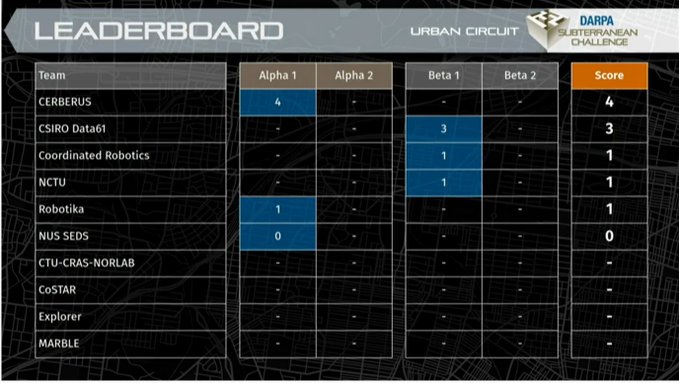 The leader board on Feb 20, 2020 |
Well, it was not great, but …
- all robots survived and none fell down the hole
- we scored and there is at least one team which did not
- we know what to improve for the next iterration
p.s. we live in the woods and the internet is really bad here (but the nature
is beautiful here) so I cannot easily create screen shots from the live DARPA
video available on
Subterranean
Challenge Urban Circuit.
p.s.2 known bugs (now) — MOBoS and Maria failed because of
--start-paused parameter which in combination of follow trajectory … did
not work.
21st February 2020 — Beta Course - 1 point
The Game Level 2 is Over — well, it was not really next level, I should
rather say that we (Robotika) were competing in Beta Course and scored 1
point. We should be happy about that but somehow our expectation this time was
higher. Why? Well, all other teams scored at least one point in Beta Course
too …
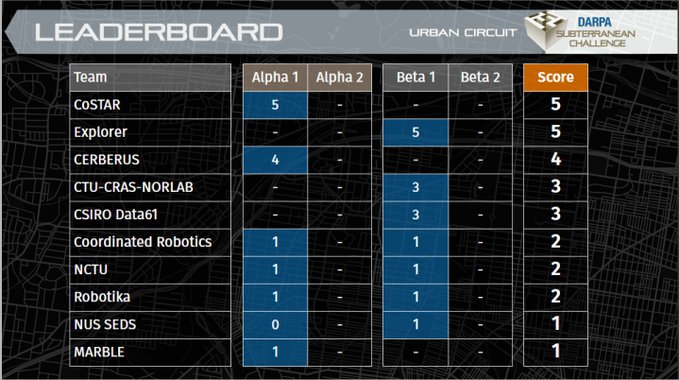 Leader board 21/2 |
The situation from Pittsburgh repeated today again when I have seen the
artifact but I was not able to locate it. (After home review we have not
seen anything there so the answer could be that the artifact simply was not
there so no wonder the answer was always False). It was detected by Eduro
which returned to WiFi signal but the trajectory was „broken” while the first
corridor looked straight. I tried to compensate this error from Kloubák K2, but
as I said it was not artifact but only some reflection.
So what went fine and what went wrong? First of all Kloubák K2 was overnight
upgraded to handle low obstacles from RealSense as the top priority. The
priority kick was from Alpha Course, Jetson Nano running ROS was talking to
OSGAR over ZeroMQ … it was the plan but the TODO list is quite long and every
mistake will surely show up the next day. It worked, actually it worked very
well! I had some doubts so I sent Kloubak K2 as the second that Eduro (old
untouched code) will pass the narrow doors, but … Eduro did not like it and
returned home. :-(
Kloubák K2 was sent and returned home too … hmm. So we went to smaller
robots: MOBoS and Maria. MOBoS went nicely through the passage and start to
explore small rooms on the right side of the corridor. And then it died.
Maria tried the same, but returned home again. Solution? Reduce the
walldist to 0.6 meter (as it was on MOBoS) and re-try … and it worked.
… but after Maria had seen the easy artifact turned to some small room
left and died too. (*)
For the Eduro run we used the same „trick” as with L-shape start in Alpha
Course — here the trajectory was set to 50 meters straight to push
exploration in desired direction. The robot was exploring various wet areas
with deadly machines (I wish I could place here the picture … maybe after the
embargo I will revise this blog).
In meantime we sent Kloubák K2 to explore left side … it explored about 100m
and dies on some small stone in a small room. (**)
(*) just a couple minutes ago PavelJ discovered the reason. Both robots run on
ROS and used names within the local network, but as soon as the connection was
broken then names were no longer valid and the ROS nodes stop to communicate
… and the robot died.
(**) Jakub just plotted Gas values and … yes, we have found another
artifact, but did not report it:
Guess where was it?
22nd February 2020 — Run 1 completed
Today we had „day off” (only the best teams from Pittsburgh competed today).
The short rest was nice, some of us even slept, but unfortunately (?) we have
to get back to work if we want to have a chance:
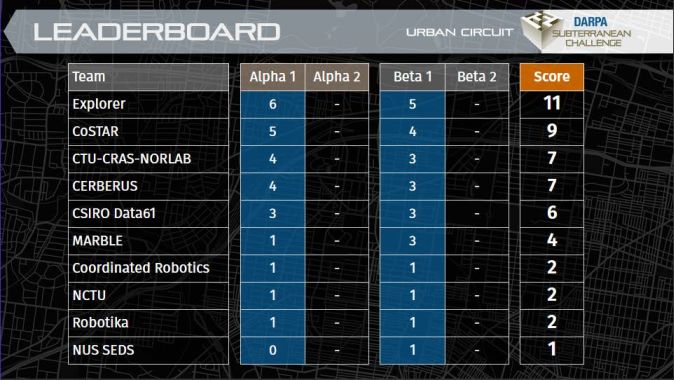 Leader board for Run 1 |
We have to end up on the 6th place in order to win some money from System
Track. This means to score at least 2 points per run in order to have better
score than Marble team from Colorado. And as we remember from Pittsburgh,
the second run will be harder and all the teams will take higher risk (maximum
for each Course is counted). Sigh.
p.s. we watched video from yesterday — teams Explorer and CoSTAR and at
least the walking robots from CoSTAR were very impressive. Their robots walked
down the two floors, and it turned out that they cooperate with Boston
Dynamic which is „partner” of CoSTAR (NASA, JPL, …).
p.s.2 tonight we had Teams Mixup evening (?) and we learned that most of
the teams teleoperate their robots. For example Cerberus have also walking
robots, but when the base robot with long cable lost connection the robots were
automatically directed to return home autonomously, but failed …
23rd February 2020 — Beta Strategy and Reset Day
Today is the Course Reset Day when DARPA will build and break the
walls, reposition artifacts and prepare new traps for the robots.
Robotika team starts from the almost last position (9th) so we will start
first in Beta Course tomorrow. How do we change the strategy when compared
to previous run?
Well, the original plan was to start long range exploration with robots Eduro
and K2 — right and left side of the unknown space and ignore small entries on
both sides of the corridor. Then Maria and MOBoS would explore that part, but
… it looks like the motors on Maria are really fried (both of them) so
missing line was fatal:
"virtual_bumper_sec": 10.0,
or better the one from K2 and K3
"virtual_bumper_sec": 10.0, "virtual_bumper_radius": 0.5,
(the default value for virtual_bumper_radius is
virtual_bumper_radius = config.get('virtual_bumper_radius', 0.1)
… hmm, I expected meter … well, definitely explicit is better then implicit here)
What is Virtual Bumper — it goes long time back to
Cleaning Contest in 2002 when our robot Berta
won the first prize in Switzerland. There we change the disadvantage of weak
motors into advantage: if the motors should move (PWM above some threshold) but
encoders do not show any change, then you are probably stuck on some obstacle.
Here was Maria stuck on some concrete block and even the full power to turn was
not enough. :-(
Here I am surely the one to blame because I did not force enough the new
ROS-hybrid robots to be merged into master. There would be higher chance to
spot similar mistakes…
So back to strategy — if we loose Maria then MOBOS probably has to handle
both sides of the corridor with narrow passages. There is also discussion if to
use 4WD on K2, which will make odometry from encoders less useful, but
RealSense tracking camera can compensate that. K3 drives 4 wheels by default
and remaining 2 uses for passive odometry … and we do not plan to drive all 6
wheels next two days.
Well, we start at 9:30am and competition run is from 10:00am, so wish us luck
tomorrow.
24th February 2020 — Run 3 - A Nightmare on Elma Street
What could possibly go wrong? And what could be worse? Well, I have witnessed it …
At the beginning everything went fine — my laptop on the right, Zbyněk's
laptop on the left, live video stream from GoPro mounted on K2 via Honza's
phone. Zbyněk prepared tab with automatic rsync (downloading logfiles from
currently online robots) of all robots (with optional preference with one),
the second tab contained Jakub's tool for analysis (heat map) constructed on
all collected logs for WiFi Phone artifact signal and CO2 level. Then I had 5
terminals for visual inspection of downloaded logfiles, one for each robot.
There were also two spare terminals ready for „anything”.
One minute to the start I lost console to Eduro. Then K2 was deactivated
… no way to even start the robots! Then I noticed WiFi signal from Phone so I
tried to report artifact. That failed too!!! It is hard to score if you do
not have connection to DARPA scoring server!
Then I switched to Zbynek's notebook, which was connected, started Eduro and
synced logs. Eduro went all the way to L-turn and then I lost connection.
The second was K2 (right side this time) went to the column (on the right
side), turned around and returned home! That was nice. WiFi did not work,
the robot could not connect to the base station even as it was already in the
Pit Crew area. The only solution was to connect via cable and downloaded
logfile. Restart took 15minutes and the connection still did not work. Now
come the true autonomy, K2 was started via cable (Jakub) and the only
connection was LoRa (robot position and automatically detected artifact).
Surprisingly K3 was on WiFi and could be started — went fine through narrow
doors and disappeared somewhere near Eduro. Yeah, I forgot MOBoS, which
after restart (there was some problem with LoRa), turned to narrow passages,
and that was it. It seems that the problem with ROS and lost connection
repeated again — we tested it home but maybe the WiFi was not off long enough
or … nobody knows. There was also a problem with tracking camera (as we have
seen now at home), which was failing probably due to partially occluded view by
new bumper.
Maria with replaced motors moved a little bit, starting from the last position.
It moved, turned to the first hole and stopped (the motors are for lower
voltage and weaker).
Summary: 1 point for artifact reported directly by the robot.
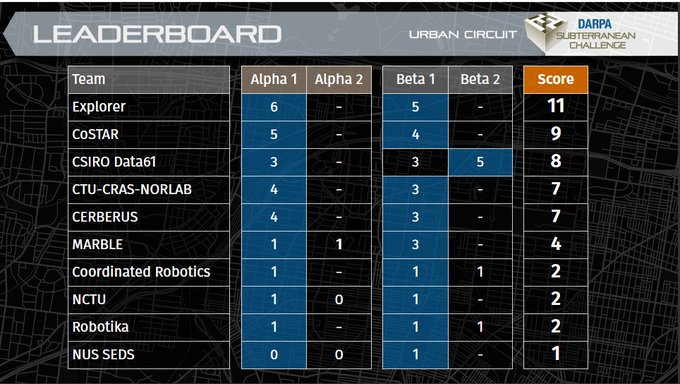 Leader board 24/2 |
25th February 2020 — Run 4 - The Last Strike
OK, it is over now — our final score is [1, 1, 1, 1]. The maximum is
taken from both runs, i.e. [1, 1] … and because we reported artefacts
typically late we are going to be the 9th position (the last place from the
teams scoring 2 points).
No robots were hurt during this run (*)
(*) one exception is broken right front down-drop on K2
p.s. updated leader board:
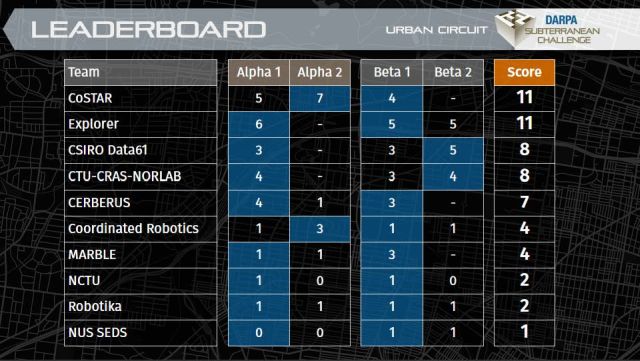 Leader board 25/2 |
The strategy was the same as first time on Alpha — move in Kloubák K3 to
provide better signal and then start one robot a time exploring each side …
Kloubák K2 made it all the way to reactor … and enter it (no signal zone).
Note the 1/4 coverage of the whole area. Yeah and the zero score 10 minutes to
the end too. We scored 1 minute to the end …
Kloubák K2 stopped due to CAN failure (unexpected message E4 00).
What is not visible on DARPA SubTv is failure of Eduro … it returned twice
(?) and the problem was with RealSense Tracking Camera. SICK lidar was in
the field of view of tracking camera. It was the best part to track when the
light was not very good and only image of lidar was very stable … basically
it created map all around Eduro without any chance escape.
26th February 2020 — Lessons Learned
Today we have day off while the best teams are still competing. And in the
afternoon is going to be excursion of the Alpha and Beta courses. There
will be final announcements, awards ceremony and technical interchange
meeting tomorrow so it is time to summarize lessons learned we could
share with other teams. Moreover I am tempting to let František speak …
he did quite well, see DARPA TV after
our last run.
OK, so what is the main lesson learned for our team? Or for myself? I think
that we are on the right track and that is the combination of both
System and Virtual Tracks. This implies full autonomy and definitely
not great results in System Track. My team hates me for that and maybe it
is not the right competition if teleoperation is allowed (or worse preferred)
… „why not to switch to remote, pick some points and win at least some
money?” they said. I do not know, maybe it is because I have seen it before
:-(. It is not only my hate to simulators but also to joyride (robot
controlled by joystick) … it is tempting and it takes huge effort to return
back to what we really need to do and that is make the machines fully
autonomous in situations when the human is not available. And that will
happen. And that is the interesting part (for me) — then you can explore
kilometers underground with relatively cheap equipment, no need for
communication (yes, it is nice to have it but you have to be able to survive
completely without it).
I have seen the effect yesterday afternoon after the last run, when the team
wanted to do something — so they connected some ROS modules and extended
OSGAR not to only send desired velocity commands but also to accept them. As a
result they were able to run both Kloubák K2 and K3 on remote outside in the
terrain. They all enjoy it only I was sad. It was like that they finally
could do what I „prohibited” … but it was in the right time so let them
have also some fun at the end. (I do not know how long I am able to hold my
position though)
I was going to put some clip named Full (of foolish) autonomy which would
be collection of bits from SubT Urban:
- Eduro dancing around the pole
- Eduro hitting the wooden barrier, repeatably
- K2 going there and back, there and back, many times and the down-drops triggering alarms on the low barrier
- K3 going going across the wooden barrier (at least the front wheels)
- MOBoS trapped in a small room failing to find the way out
- Maria in flames when was stuck and Virtual Bumper was not properly configured
All these scenarios could be easily resolved by operator with remote access.
Except the last case (or maybe even there) we had connectivity and video input
… so maybe it is really stupid to let the robots in the traps? But on the
other hand it was lesson hard to forget and pushed us to complete
integration with RGBD RealSense camera, which was already prepared on most of
the machines but was not on the top of the priority list. Total failure in the
fist run change that and that is how it could work.
I should list also some cases when autonomy worked nicely:
- K2 entering reactor via Stargate
- Smooth navigation through the doors on Beta Course, all robots
- K2 finding phone artifact in a small room (without connectivity)
- Eduro returning home on LoRa call, nice, unsupervised
What technical lessons we learned? Primarily it was testing of Intel
RealSense depth and tracking cameras. They work very well, but …
- USB3 noise harms WiFi communication (see USB 3.0* Radio Frequency Interference Impact on 2.4GHz Wireless Devices - White Paper)
- tracking fails when parts of the robots are in field of view
- water on the floor creates false obstacles/holes
In particular the first point was if we want to navigate safely or if we prefer
connectivity to the robot. We preferred safer robot.
Another hard stressed sensor was IMU. We have seen it to fail before, but that
was due to some checksum error partially caused maybe by nearby RealSense. But
what we have seen in both Alpha and Beta courses during the 3rd and 4th run was
change of validity flag from 1 to 0, on which OSGAR reacted not to send
the IMU angles into the system. As a result the robot was orientation
blind and that was fatal for the application. I still guess that it is rather
recommendation flag not to trust the orientation, but … what can the robot do
deep in the dungeons?!
I am glad that now we have two independent position system: IMU + odometry (as
we have it up to now), and RealSense tracking camera. Data for both were
recorded and we hope to fuse them into more reliable output. Imagine failure of
the light when the robot has to return blind … that is situation when the
tracking camera fails, for example.
Another success was intelligent sensor box. It consists of Jetson Nano,
RealSense tracking and depth cameras. It is running ROS and connected to the
robot via Ethernet cable. This whole unit can be placed on any robot (requires
some configuration changes though) and provides filtered scans and map, which
can be used by the application. The advantage is that it can be developed once
and deployed on all robots by simple copy of the SD card (Jetson file
system).
Also LoRa worked fine, mostly. Back at home we observed several LoRa failures
in the building after few turns at the university corridors, but here in
Satsop building it worked fine. (the reason could be that the robots
re-forwarded the messages, which I did not check yet)
The control center improved too. I could see positions of all robots (yes, it
looks like from old movie Alien
but I can still track „where the beast is”). Also the unified coordinate
system (DARPA frame) worked much better. There is still TODO, which is global
time (should start from 0 at the beginning of the competition run). Moreover
robots should report their health (running, paused, stuck, burning, …).
Jetson Nano has GPU on board and one of the promises was that it will handle
detection of artifacts. It was high value for us as deep autonomous exploration
could be or better to say, typically is fatal and terminates due the system
failure. If the robot did not report anything (even hints) on its own, the team
does not score.
I could also mention some software lessons. This time we tried hard to merge
intermediate results in the common master branch. It was definitely not smooth,
but I have much better feeling that both Jakub and PavelJ were fully involved
and the pull-request and review process run even now when no time is left.
Yes, that is also the time, when it is the most important and some stupid bug
could endanger the whole team.
Note, that some contributors are not mentioned here as I (m3d) integrated their patches.
There is successfully running hybrid system (OSGAR + ROS) also in System
Track (in Virtual was was must have). Newly also the control program is
distributed on two computers APU and Jetson Nano on Kloubák K2, K3 and Eduro.
Alright, the list is long enough I think . It will not fit in 15 minutes
presentation anyway.
27th February 2020 — Awards Ceremony
Today is the Awards Ceremony in hotel in Olympia (starting at 9am PCT, i.e.
6pm of CET). The winner of System Track is clear: CoSTAR — I highly
recommend to watch the last video … they are good!
Yesterday we had an opportunity to see both the Alpha and Beta Courses … and
then all of us dive into a deep depression (DiDD). The turbine building had
approximately 100x100 meters, 3 floors, and it would be impossible for human
to explore it even with perfectly working permanently online robot. Whoow, what
a place! No wonder there were shot
several movies.
Well, back to the competition … here is the final (still not confirmed)
leaderboard:
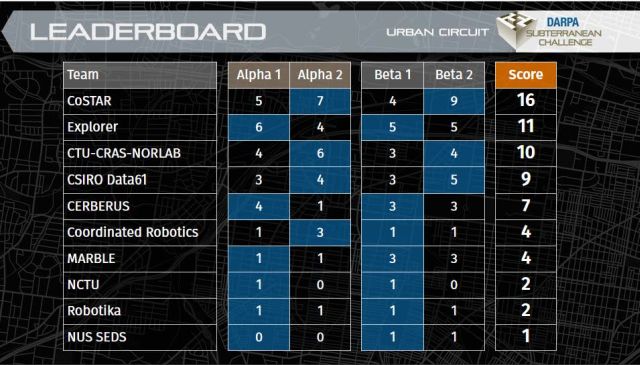 Leaderboard 26/2 - FINAL |
Note, the 3rd position! Yes, Czech Team CRAS-CTU managed to score 6 points in
their last run and reached very nice position after CoSTAR/NASA/JPL/Boston
Dynamic and Explorer/CMU. Congratulations! (Yes, $500 000 prize is surely
also nice)
The official ceremony was
live on DARPA SubTv.
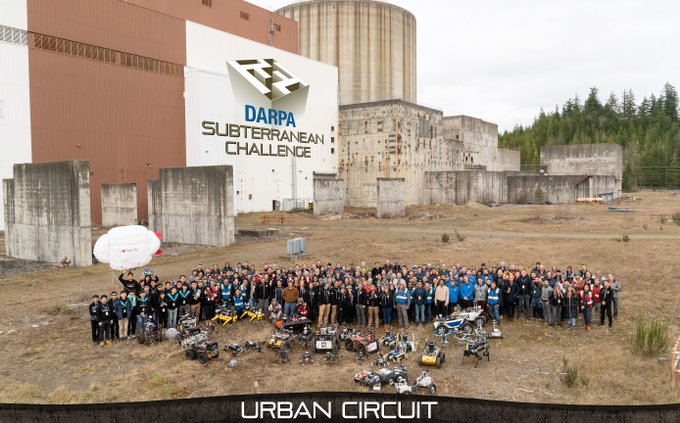 SubT Urban Teams Photo |
28th February 2020 — The Cherry On The Top
There was one more highlight besides learning details how our competitors (CMU,
NASA, Boston Dynamic, …) solve the problems. Yes, the success in
Virtual Track also
counts.
Thanks to Ross Read we could visit the SubT Urban Challenge location one more
time. This time we could see it also from the top! Yes, the view from inside
the cooling tower was also incredible and the sound effects hard to forget.
I would like to thank Satsop for this great opportunity … and the climb was
definitely the Cherry on the top.
p.s. I would like to thank DARPA … it was incredible experience and I believe
it will push Robotika team another step ahead.
3rd March 2020 — The Artifacts
The game is over so it is time to review what robots have seen in the four runs
(hopefully we will also create and upload some videos).
Run 1 (Alpha)
I would start with front camera view of Kloubák K3:
These are the deadly barriers invisible to 2D lidars. You can see Kloubák
K2 on the left, Eduro in the middle and if you look carefully also red backpack
artifact on the right.
Here is the detail of artifact and K3 crossing the barrier with the left wheel!
You can also see the dust in the air as the wheels are still turning.
Run 2 (Beta)
Here are some images collected by Eduro robot:
The staircase is special, because on the very top is hidden Cell Phone. In
the final run one of the walking robots try to get there … and crashed.
Run 3 (Beta)
Now, „funny” artefact confirmed independently by two robots (K2 and K3):


